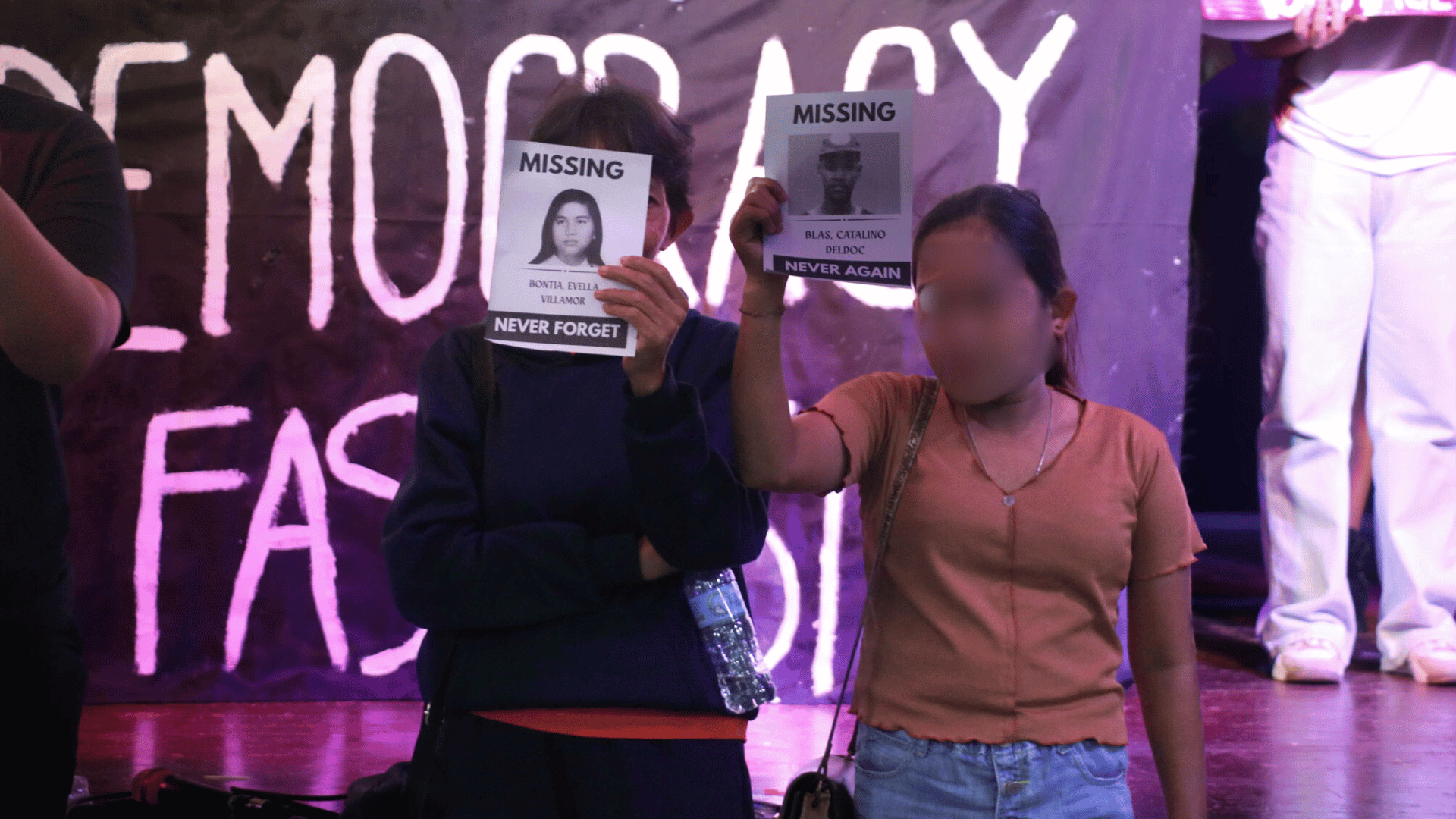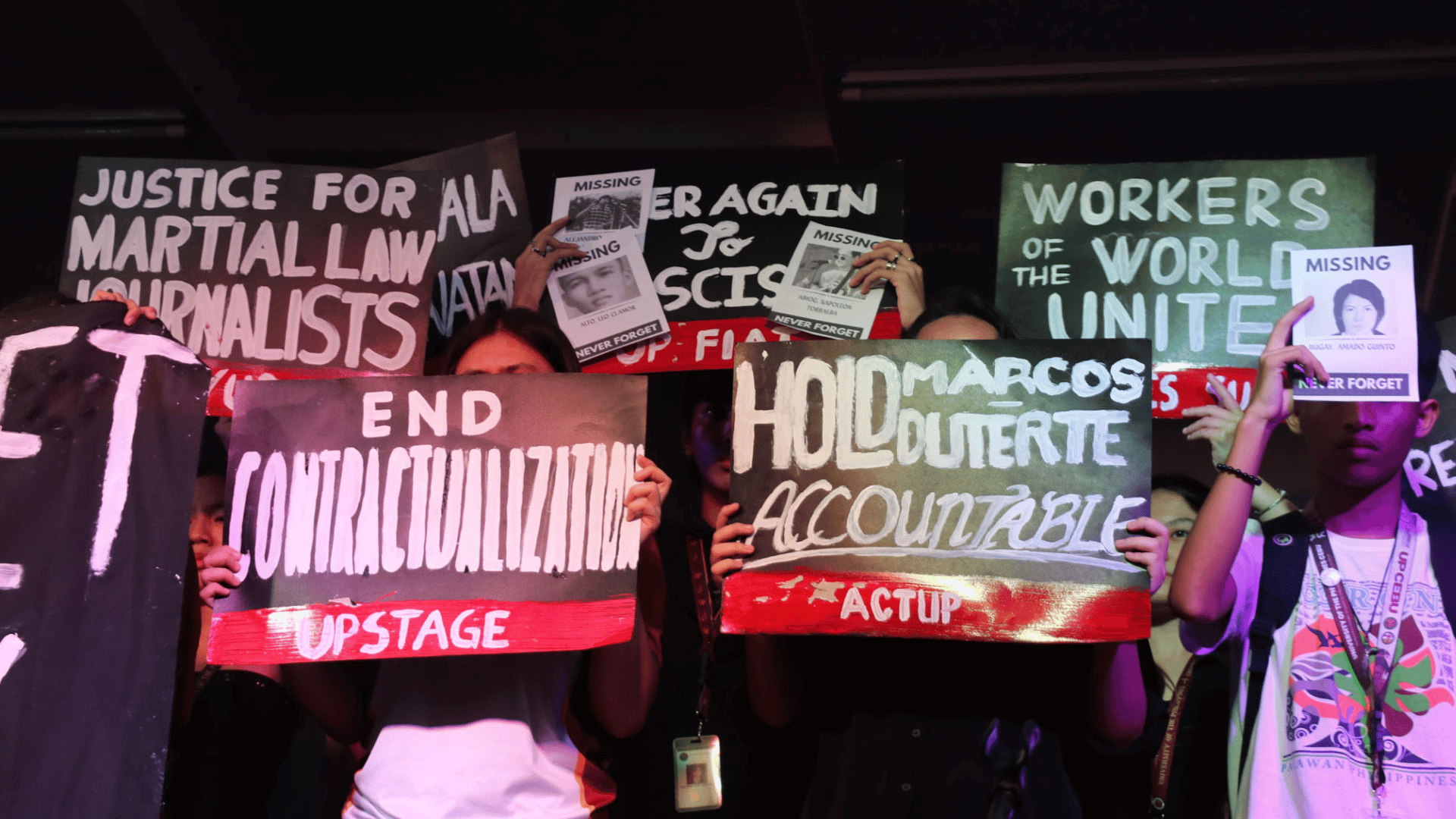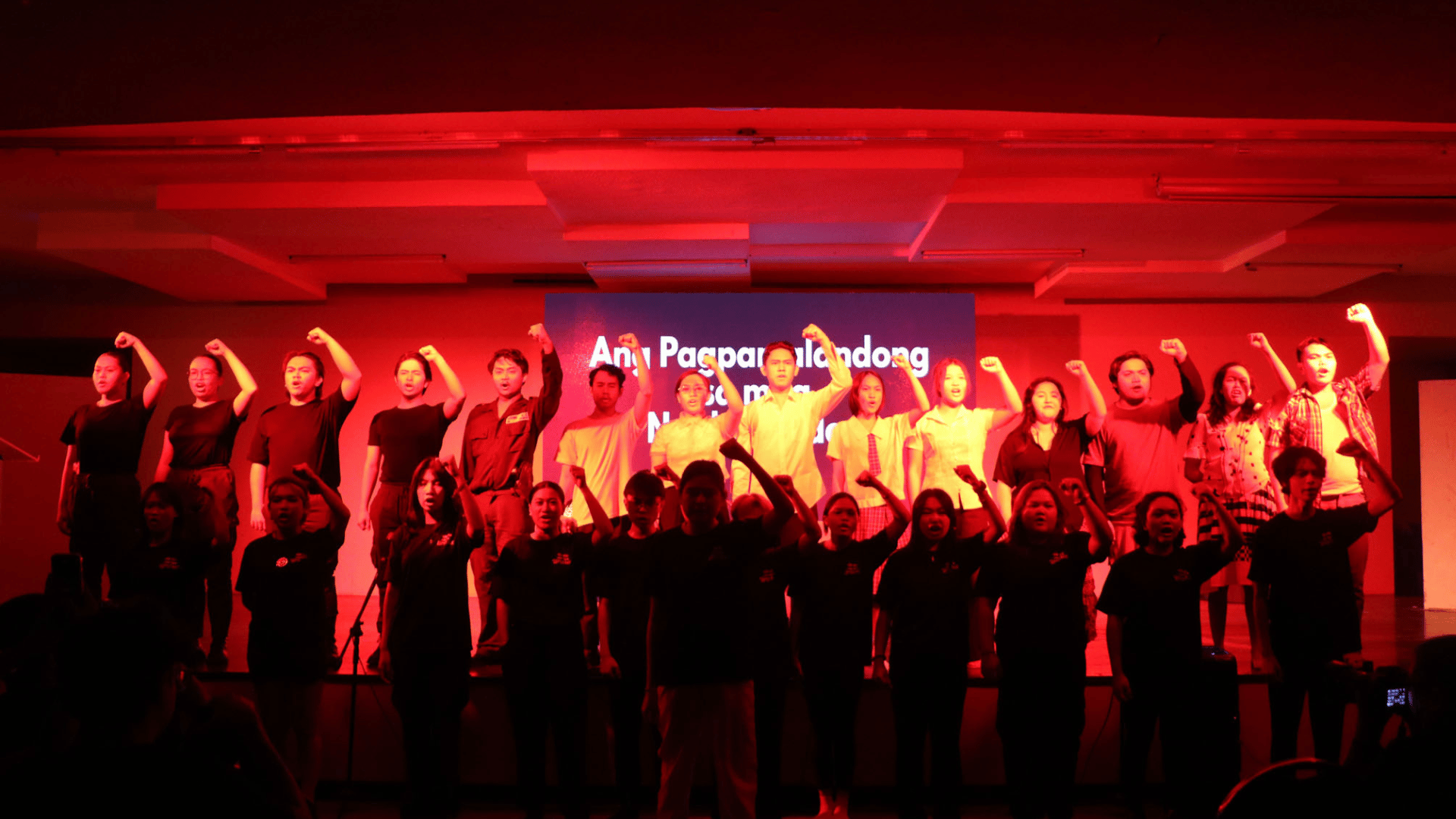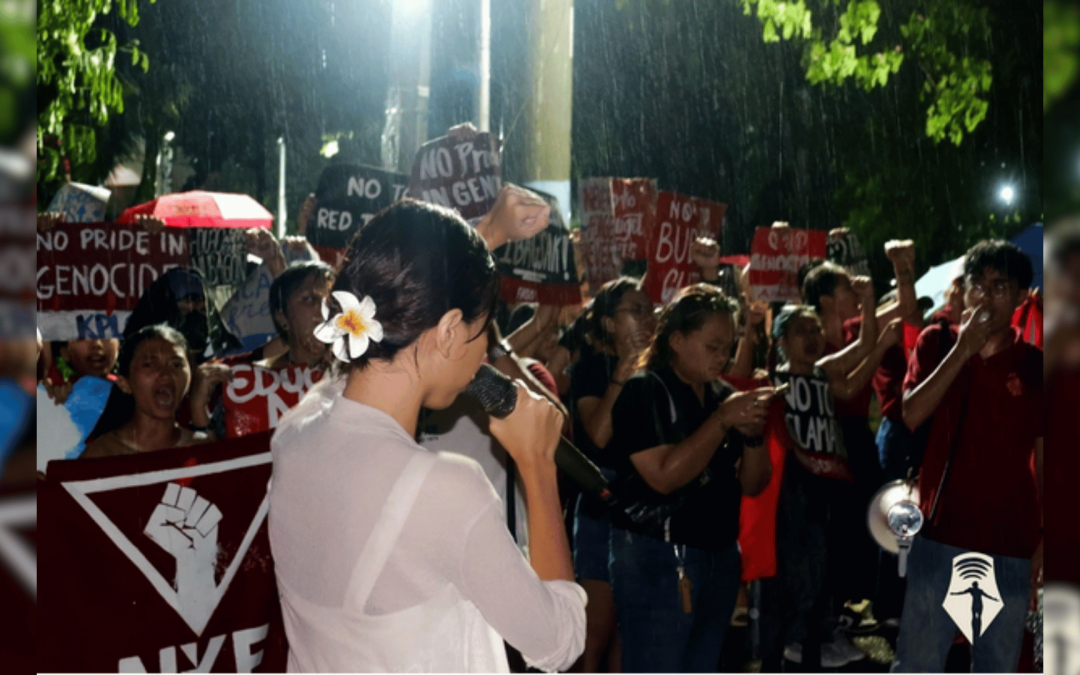Written by Kyle Zenith Durano, BA Communication IV | Photos by Zhyreen Toledo/Tug-ani & Jessa Capadngan/PIO
Caging the People’s Watchdogs


“Corruption kills the most vulnerable”
One of the most pressing issues of today, however, is the extensive and systemic corruption that has robbed the Filipino people of their right to live and right to safety. This comes in the wake of the controversy behind the multi-billion mismanagement and corruption of flood control projects all over the country.
During Marcos Jr.’s 2025 State of the Nation Address (SONA), he declared an investigation into flood control projects after days of heavy rain brought by habagat (southwest monsoon) and flooding in several parts of the nation. The following month, investigations were launched into the scandal, uncovering a deep network of corruption through kickbacks, bid rigging, bribes, insertions and cuts—all involving contractors, the Department of Public Works and Highways (DPWH), and the government itself.
Out of the ongoing investigation into this controversy, it has been estimated that approximately 1 trillion pesos have been lost to corruption, inciting deep anger in Filipinos. And rightly so, considering that this 1 trillion pesos comes directly from the taxpayers’ pocket. This is exacerbated by the gross display of wealth by contractors involved in the issue—particularly the Discayas—and their family members.
This impunity, once again, has its roots in the regime of Marcos Sr., which had been infested with rampant corruption not only by capitalists and businessmen, but by the ruling family themselves.
Despite one of Marcos Sr.’s promises to end corruption and poverty, he was unable to truly dismantle the economic system that perpetuated this. Instead of eliminating the oligarchs, he has merely replaced them with businessmen who have familial closeness to the Marcoses–whether they be mere friends or relatives. This specific phenomenon was called crony capitalism and was marked by state monopolization of businesses, as well as kickbacks, bid rigging, bribes, insertions and cuts taken by Marcos Sr.’s cronies—a direct mirror of the present.
Around the end of his dictatorship, the Philippines had suffered greatly: 74 percent of the population considered themselves poor (around 40 million) and wages for skilled and unskilled labor sunk to 35 and 23 pesos respectively—all in the backdrop of an economy whose national debt ballooned to approximately $28 billion. Today’s economy fares no better: 49 percent still consider themselves poor (around 55 million) and the minimum wage rests around 500 to 540 pesos in Central Visayas, an amount that can barely feed a family of five—in the backdrop of an economy that now struggles with a debt that has hit a record high of 16.31 trillion pesos (or around $280 billion, for comparison).
As said by one speaker in the protest action: “gilubong kami nila sa utang”—a debt that would last beyond the lifetime of the current labor force and will bleed onto the future labor forces for decades to come while we continue to struggle with wages that can barely put food on the table, as the elite continues to feed off the taxes that they are stealing from the country. (They [the government] are drowning us in debt.)

SOURCES
ABS-CBN News. (2025, August 20). Pasabog ni Lacson: Mga gumuho at guni-guning flood control projects, idinetalye [Video]. YouTube. https://www.youtube.com/watch?v=duKi_bK4k-E
Bolledo, J. (2022, April 10). Robredo is number one victim of red-tagging, says ex-AFP spokesperson. Rappler. https://www.rappler.com/philippines/elections/leni-robredo-number-one-victim-red-tagging-says-former-afp-spokesperson/
Buan, L. (2021, December 1). ‘Napag-initan:’ Bongbong Marcos campaigns for plunder defendant Jinggoy Estrada. Rappler. https://www.rappler.com/philippines/elections/bongbong-marcos-campaigns-jinggoy-estrada-senate-race-2022/
Bulaon Jr., O., Mendoza, G. A. S., & Mendoza, R. U. (2022). Cronyism, Oligarchy and Governance in the Philippines: 1970s vs. 2020s. Public Integrity, 26(2), 174-187. Taylor and Francis. https://doi.org/10.1080/10999922.2022.2139656
Bureau of the Treasury. (2025). National Government Debt Recorded at P16.31 Trillion as of End-January 2025. Bureau of the Treasury PH. Retrieved September 22, 2025, from https://www.treasury.gov.ph/?p=68919
Chua, Y. (2020). Philippines: Media under increased attack from populist president and allies. Reuters Institute Digital News Report. https://www.digitalnewsreport.org/survey/2020/philippines-2020/

